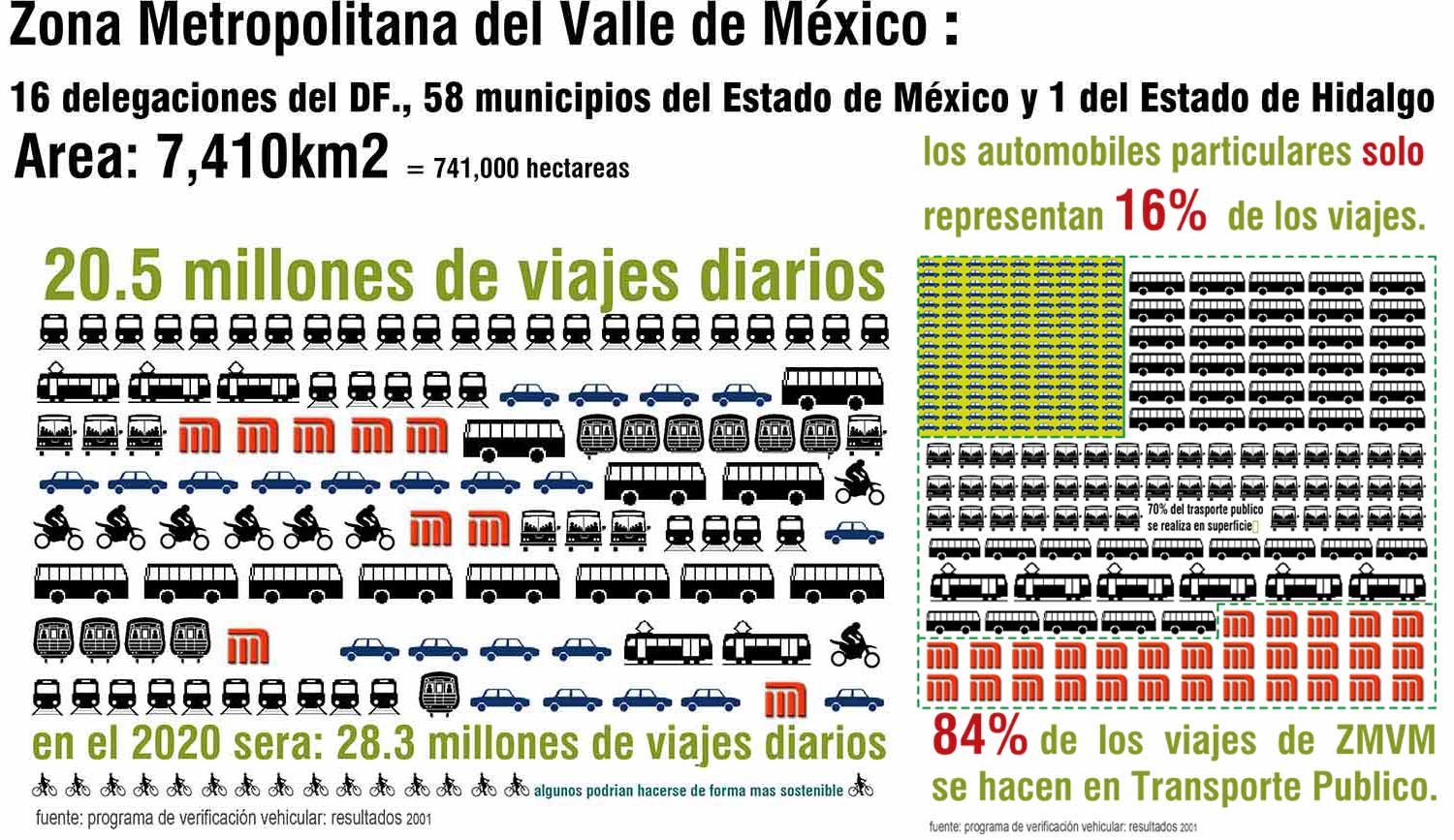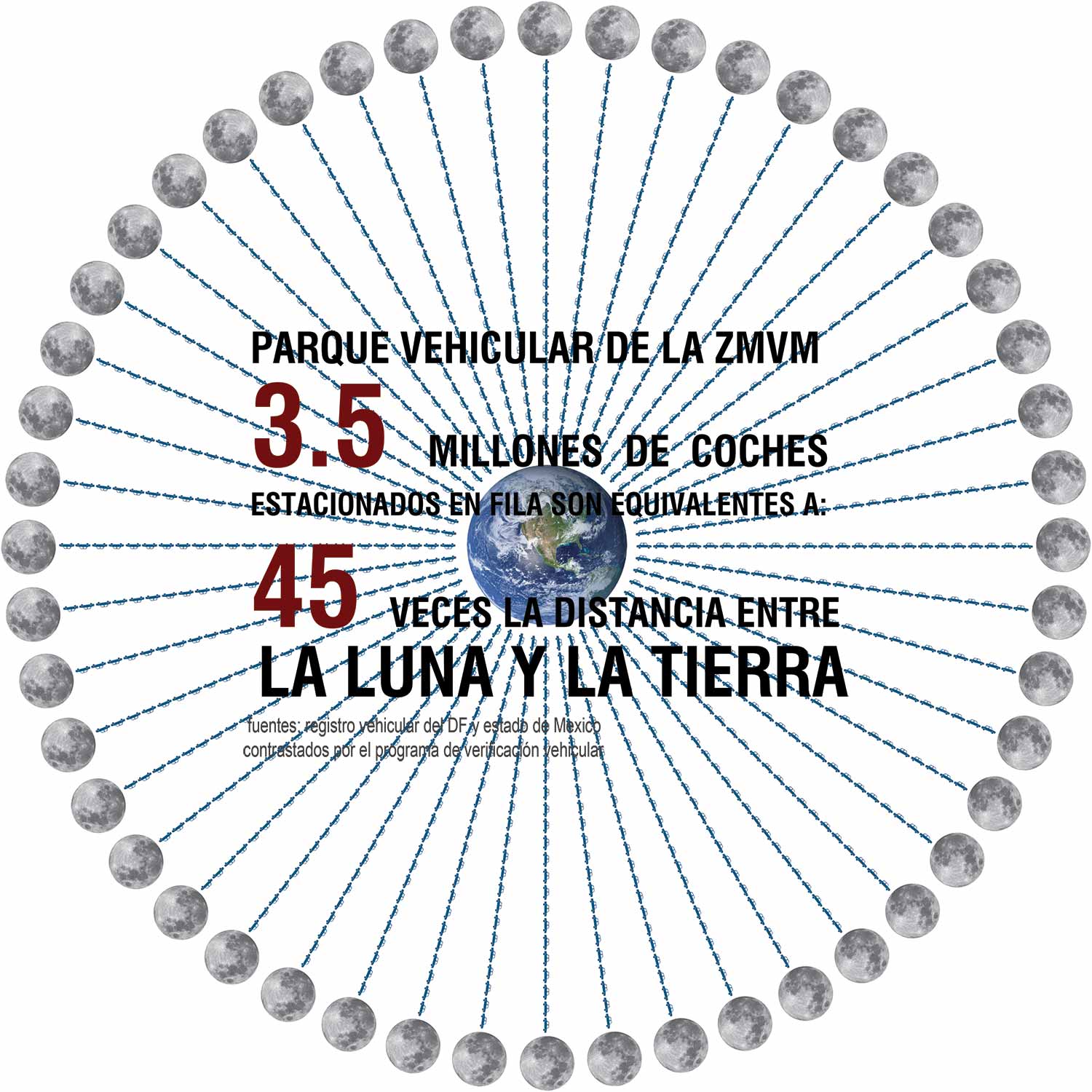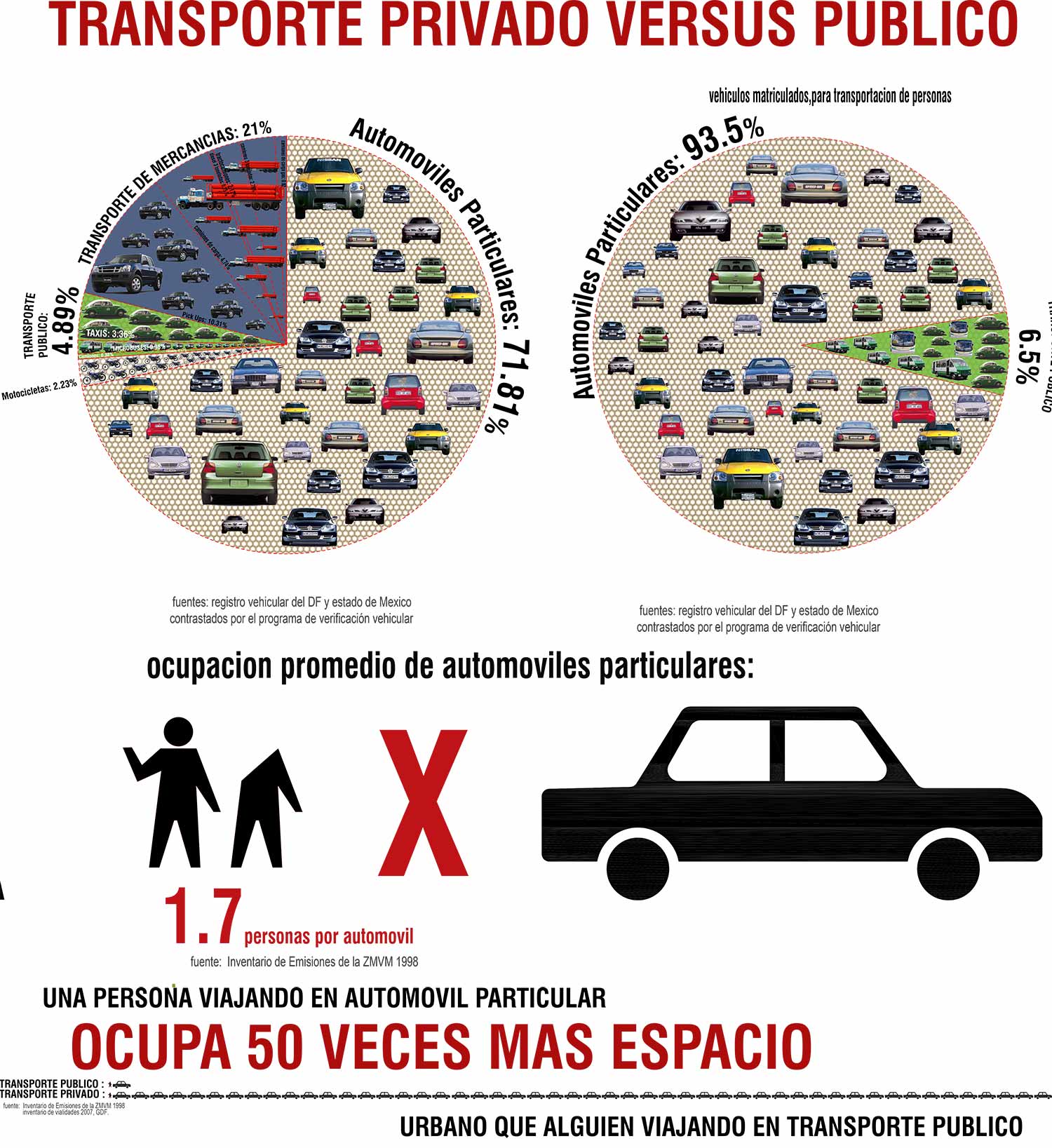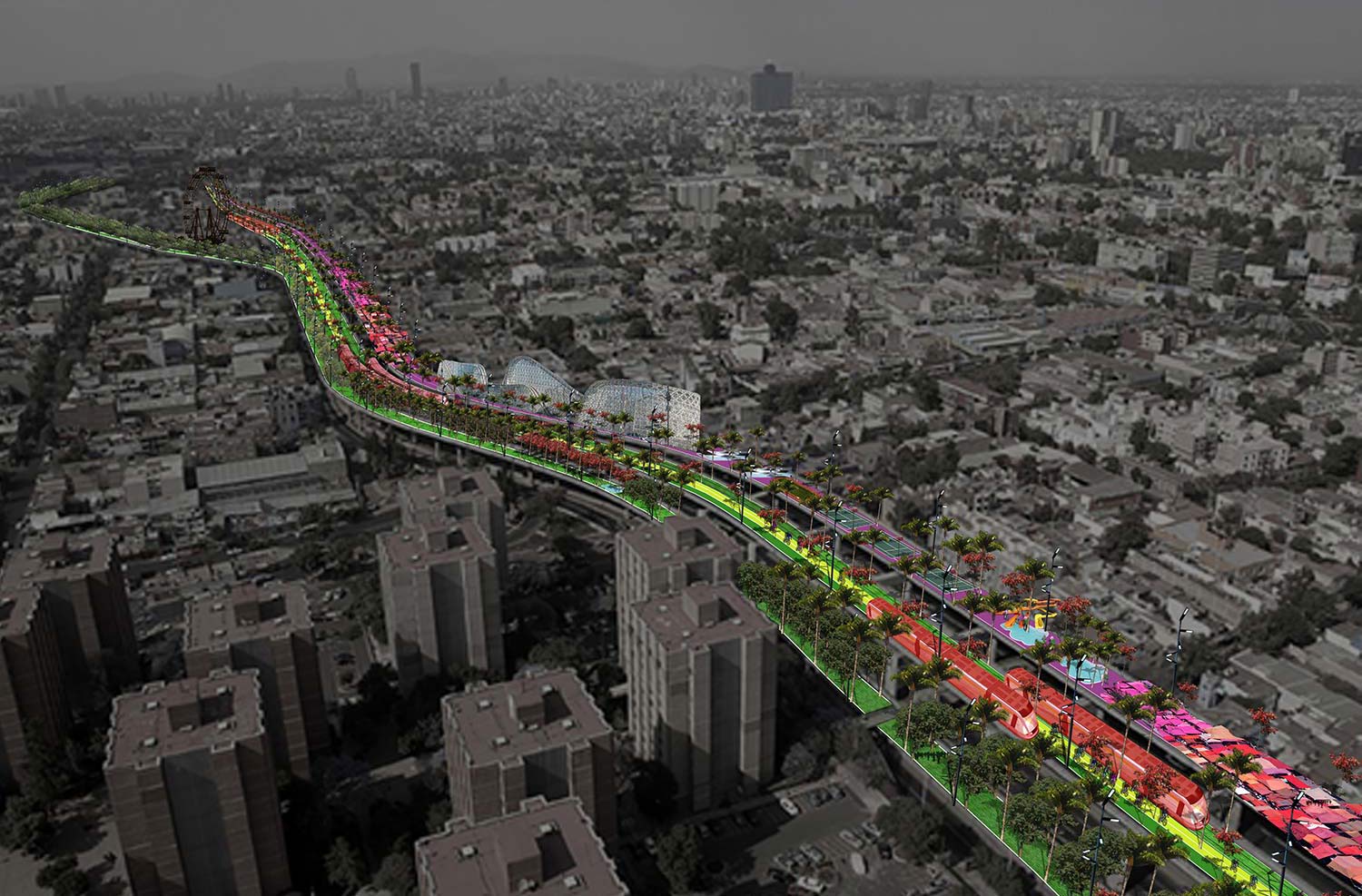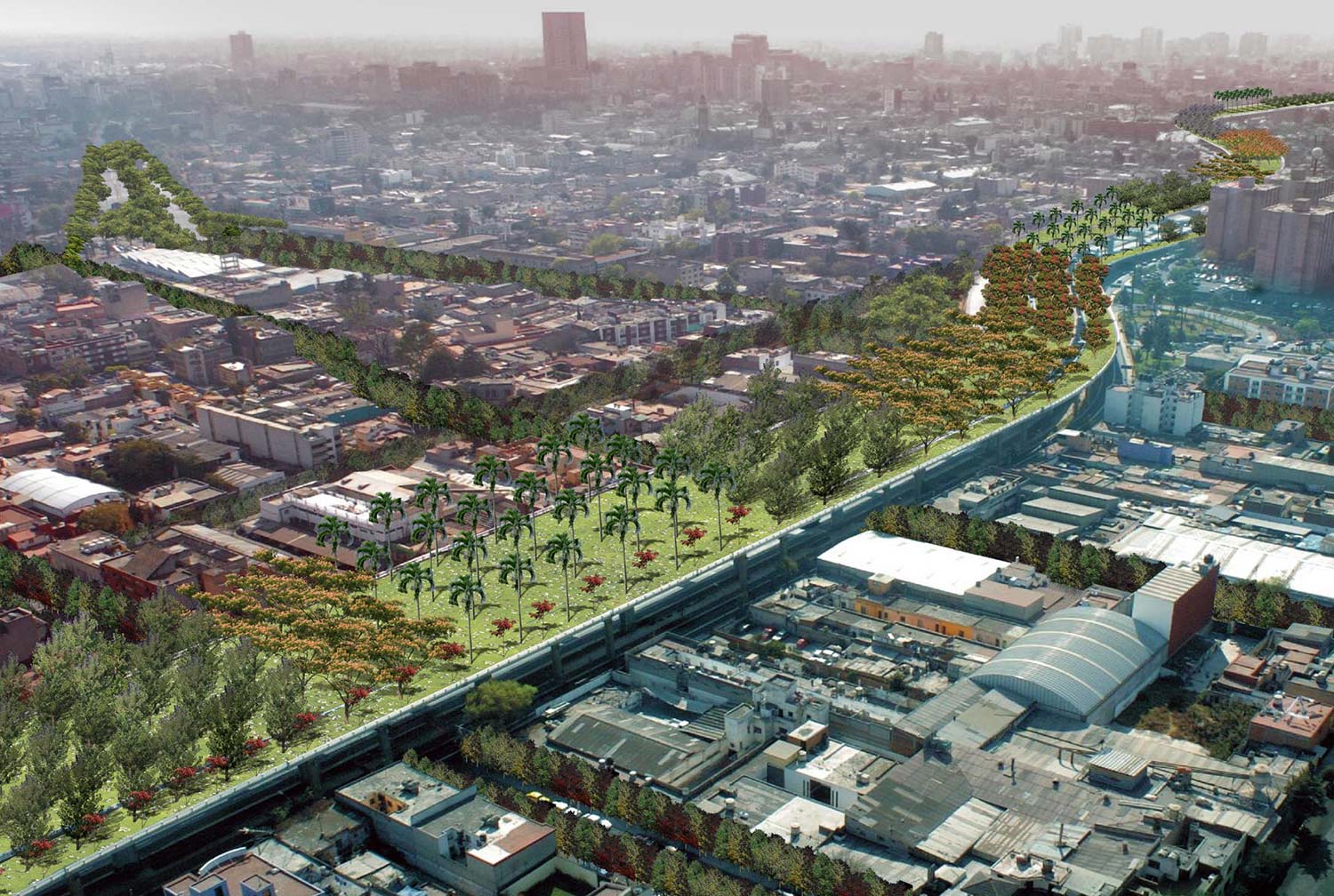

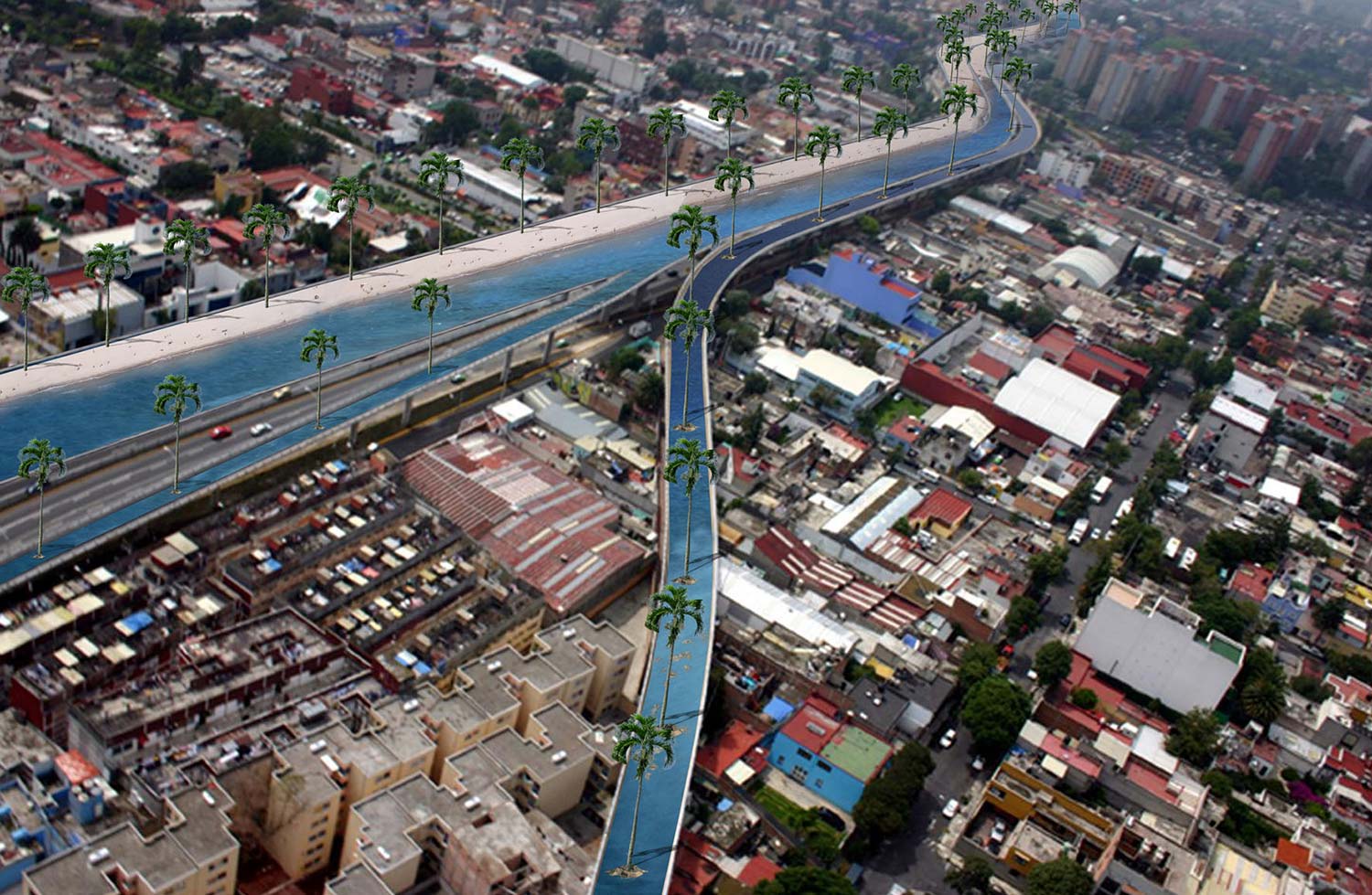

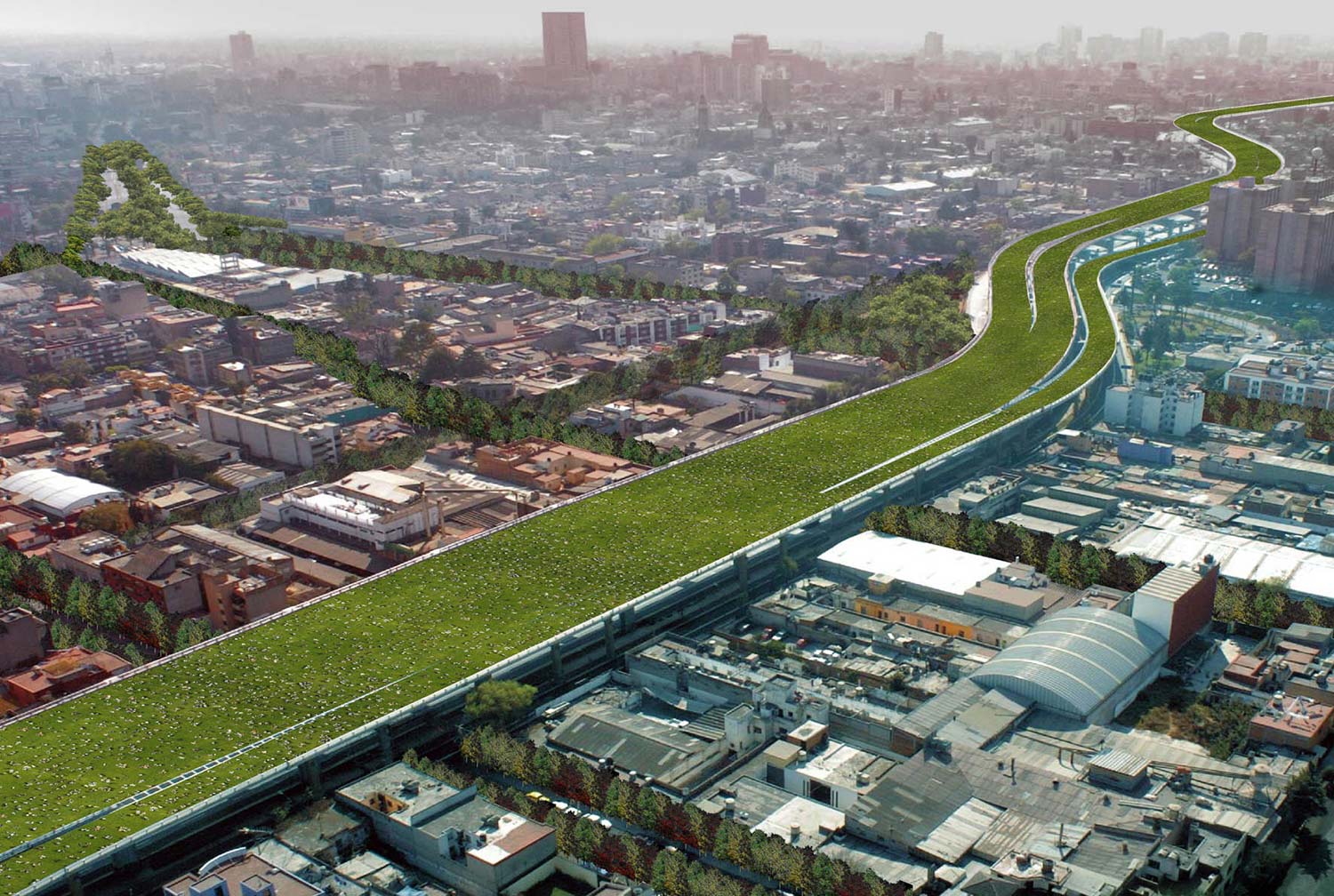
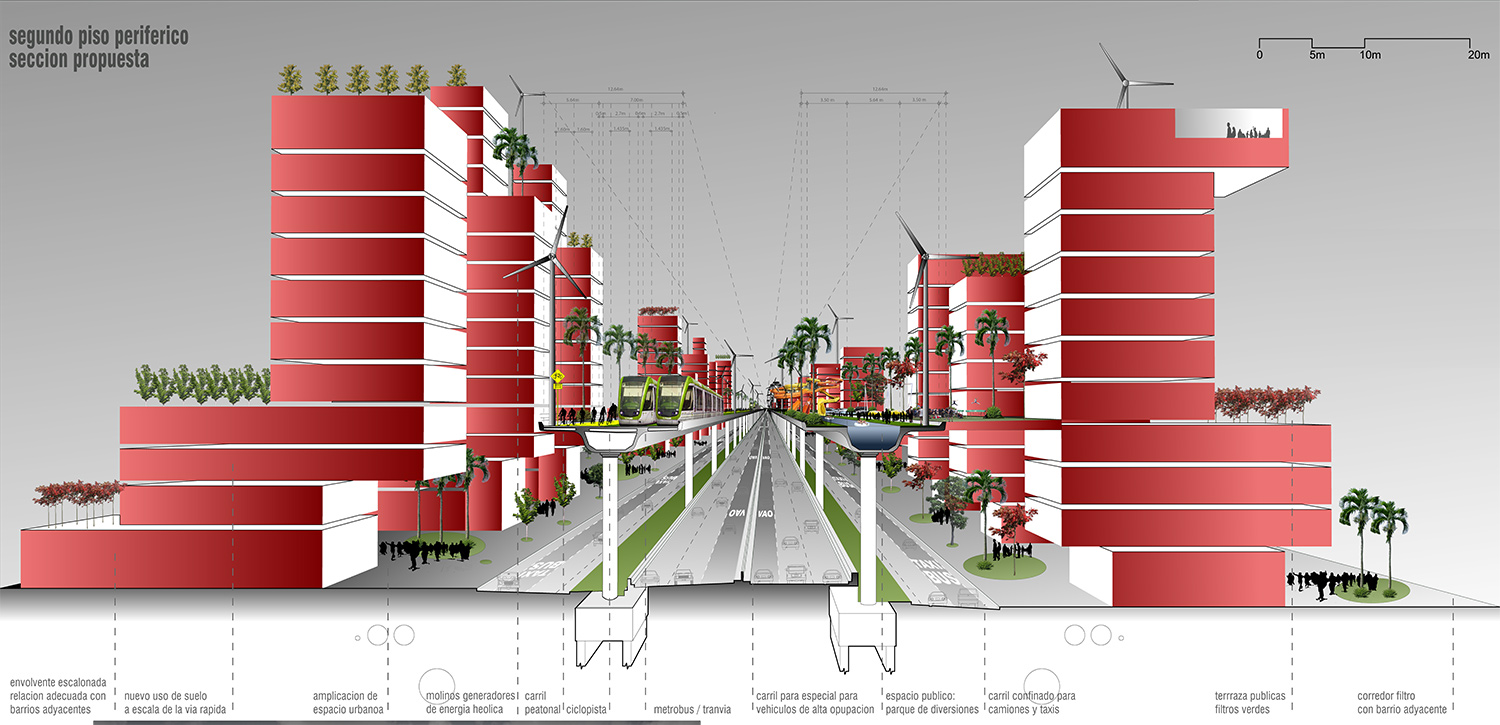



With the knowledge that the road system will be continually evolving and that any infrastructure of this kind will cease to function when it becomes saturated, it is important to foresee the limited shelf-life of these secondary roads. If we analyse similar cases such as Boston or Tokyo we can see that after an initial period of use, these hastily built systems are eventually dismantled and substituted for alternative transportation methods, resulting in vacant space which can be reused and reprogrammed for public use.
In the case of the secondary peripheral road of Mexico City, specialists have found that it suffers from technical faults which affect its efficiency and shorten its life expectancy. Therefore, we should start thinking about how we can transform the surface so that it can remain a useful part of the city fabric.
Comparative studies of highways in other cities have also exposed that the construction of these infrastructural elements inevitably results in fractures in the urban fabric which alter urban growth on a grand scale. Therefore, it would be desirable to implicate strategies to our scheme which can mitigate these harmful effects.
The proposed project is not intended to question the existence of this expressway, nor delve into the controversy. It simply seeks to propose hypothetical scenarios for reuse which will allow us to reflect on the possibilities of reprogramming urban space.
With an area of road equivalent to the green area of several of Mexico City’s urban parks, what would happen if we not only used this space for private cars but as urban space? What would happen if it we transformed it into a large metropolitan public space? What would happen if it was simply used as a collective transport system for the city? What would the effect be if it was to be turned into the largest plant nursery in the world?…
The possibilities are endless and it is these that this project aims to explore…


Comparative studies of elevated roads in other cities also show that the construction of these infrastructures inevitably involves the transformation of the immediate urban environment and the creation of fractures in the fabric of the city that alter the urban morphology on a large scale. Due to this, it would also be desirable to think of new strategies for our second floor to mitigate the harmful effects that these structures generate.
The project proposed here does not pretend to discuss the existence and construction of this expressway, let alone delve into the controversy that the second floor has raised. It only intends to use this infrastructure – now distinguishable by citizens – as a hypothetical scenario to make proposals about its possible recycling that allow us to reflect on the potential to rethink urban space.
With 6.8 kilometers in length, the second floor of the periphery together with the San Antonio road distributor add up to 18 kilometers of elevated passes, which comparatively are equivalent to the surface of Insurgentes Avenue from Indios Verdes to San Ángel, twice the distance of the Viaduct. , or the equivalent to the sum of the green area of several urban parks in Mexico City. What would happen if we replaced the running surface that currently only private cars use and imagined a different city in this space? What would happen if we converted the second floor of the peripheral into a large metropolitan public space? used as infrastructure of the city’s collective transport system? What effects would it have if we turned it into the largest nursery in the world? …
The possibilities are endless and these are the ones that this project aims to explore …
